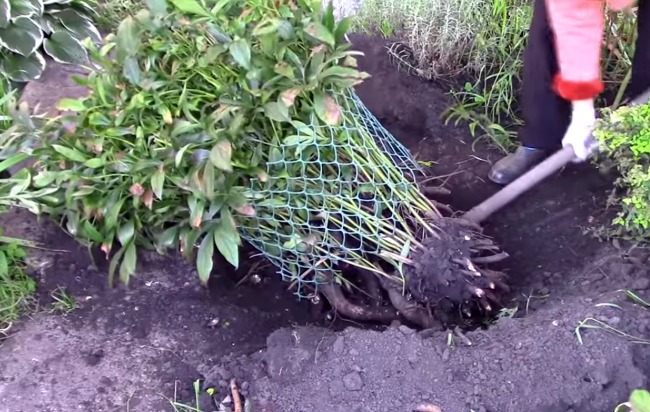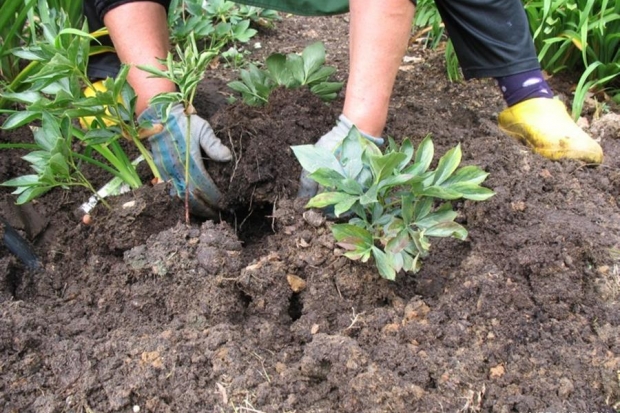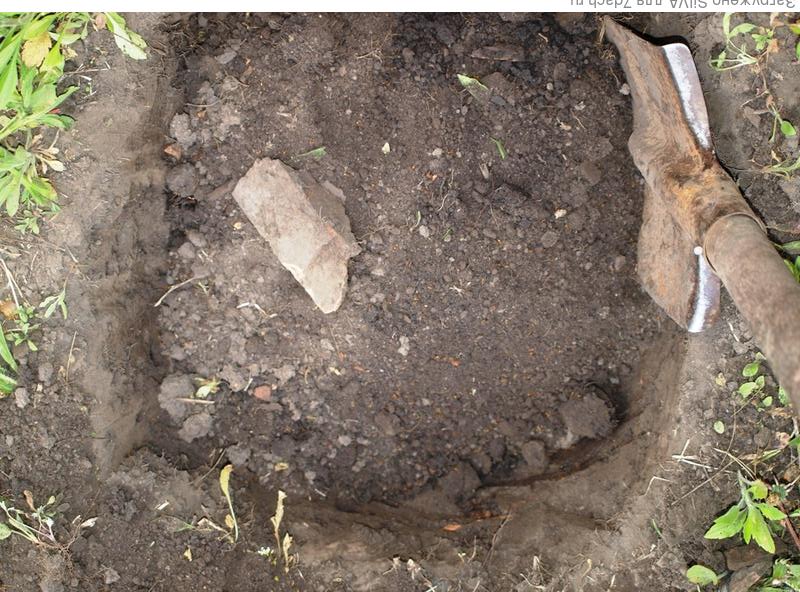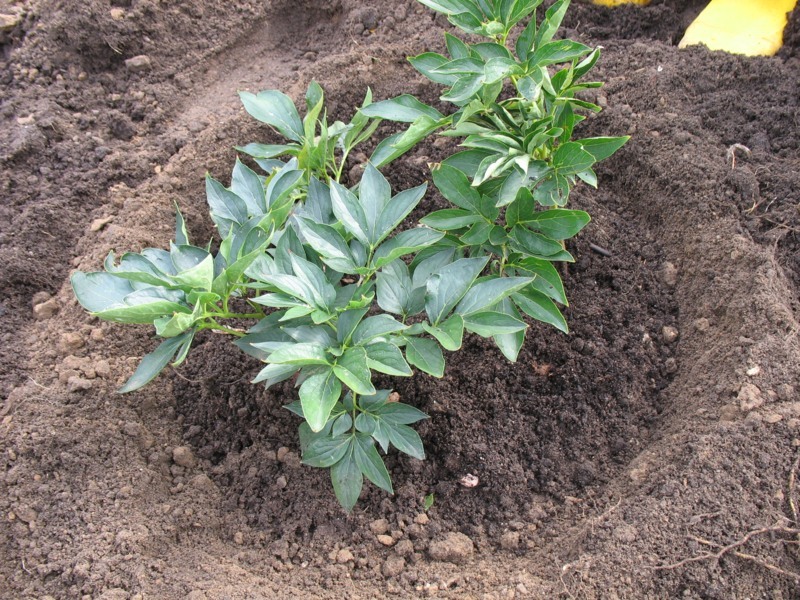Content:
A transplant of herbaceous and tree-like peonies is necessary if the bushes have been growing in one place for more than 10-15 years, and their decorative effect has noticeably decreased, or an overgrown specimen looks sloppy. The optimal period for moving peonies is autumn.
Transfer time
Each grower is guided by the weather in his area and adjusts the timing of when to transplant peonies. The main landmark is that after planting there is still a month or a half before frost. Over the summer, the root system of the peony develops well, and the bush grows stronger if timely watering was made in the heat, and fertilizers were applied. Having formed flower buds from the beginning of August, the rhizomes leave during the dormant period. For 30-45 days of autumn weather without freezing the soil, the roots take root, and in the spring powerful buds of future stems appear. Flowering should be expected for 2-3 years after moving the peony bush or dividing the rhizome.
The bush develops due to thin and long suction roots, which are almost invisible, like a spider web. Continuation of storage roots, thick white shoots, are formed at the end of September. Therefore, it is important to transplant peonies before this period so that the root system develops successfully in a new place.
Approximate calendar, when is better spend transplant of peonies:
- From the second decade of August, they begin summer transplantation of peonies in areas with an early onset of autumn (in Siberia, in the Urals) until mid-September.
- In the regions of the middle lane, planting continues until September 25.
- The time when peonies can be transplanted to another place in the south lasts the entire first autumn month.
As for the spring transplant, experts advise only one time. Peonies are moved immediately after the snow melts, when the red shoots have not yet appeared. The roots must be dug out carefully, without damaging the earthen ball. The plant is transferred to a new place and placed in a prepared hole, without shaking off the earth, so as not to injure the small roots. Young bushes planted 2-3 years ago can withstand such transshipment.
If the planting material is purchased in the spring, growers recommend storing it deep in the ground in a pot of 2-3 liters. With the onset of warm weather, the pot is buried in the garden and watered moderately. In the fall, they make the correct planting, preparing a spacious pit with fertilizers.
How to dig a bush correctly
Having studied the conditions of how to plant a peony bush and when to choose the best period for this, flower growers dig out the plants in August or September. For a large bush, a reliable tool is a pitchfork that will not cut off the tips of large roots. The suction spider-like processes penetrate to a depth of 90 cm. When transplanting, these roots are almost impossible to save everything, but cuts with a shovel of large rhizomes can cause them disease.
The algorithm of work is adhered to:
- They dig in the bushes, retreating at least 40 cm, to approximately the same depth.
- Loose a lump of earth with roots.
- They try to get it with two shovels.
- The rhizome is washed from the ground and the stems are cut to 10 cm.
A dense root ball is laid in the shade so that the large intertwining processes slightly parted from one another under their own weight. After a few hours, the old peony bush is divided.
Separation
Rhizomes of powerful old bushes are tightly intertwined. Therefore, when dividing, they are first measured approximately so that there are 3-5 kidneys on the segments. Too overgrown bushes are divided by driving a wedge into the center of the coma. They work with the roots carefully, despite their impressive appearance, they are quite fragile. They try not to cut off such a fragment where there are many buds and few roots. The plant will not be able to fully feed due to the small volume of the root system.
Adhere to the requirements for healthy divisions:
- root length - 8-15 cm;
- there are at least 3-4 kidneys, but not more than 6-8;
- 3-5 thin shoots depart from the rhizome, up to 8-10 mm thick, up to 4-6 cm long.
The roots are cut with a sharp knife, following the direction from top to bottom. After separation, the sections are revised to reject those where signs of disease are found, or there is large damage. Rotten roots are cut off, treating fresh surfaces, like the entire lump, with copper-based compounds: Bordeaux mixture, copper oxychloride or other preparations. Then the sections are powdered with wood ash. For a day, the planting material dries up in a dry shady corner. To avoid the appearance of rot, the rhizomes are disinfected in a pink solution of potassium permanganate. If desired, gardeners process pieces of peony rhizomes in a solution of any growth stimulant, following the instructions for the preparation.
Undivided bushes take root poorly, so too old rhizomes are cut out from the central part of the coma. In addition, these parts can be rotten or hollow inside. Slices are also processed. You can also plant small pieces of roots, which have 1-2 buds. Experienced flower growers do not refuse from fragments without buds. If there are small sturdy roots, the peony will grow into a flowering bush with proper care after a few years. The buds wake up if the rhizome is in good conditions.
Transplant stages
Having precisely determined the time when to plant peonies, a pit for future large flower bushes is prepared in 15-30 days. During this time, the substrate will be compacted due to natural shrinkage, and the rhizomes will be placed at the required depth when placed. Different types of peonies have their own conditions in the garden. Dividing a bush of herbaceous peonies, you have to dig 2-3 holes, which should be located at intervals of up to 1 m. Sprawling tree-like peonies are planted at a distance of one and a half to two meters.
Plants are light-requiring. It is important to place peonies in the yard or garden in such a way that they are under the sun all day. Only light partial shade is allowed at lunchtime. Therefore, it is undesirable to plant bushes near buildings or high fences and trees.
Pit preparation
The planting pit should be quite spacious and deep, because peonies grow in one place for up to 30-80 years. Having chosen a sunny, protected from cold winds place that meets the requirements of peonies for soil acidity and not swampiness of the site, they dig a hole 60-80 cm deep, 60x60 or 70x80 in size. A more spacious place is prepared for tree peonies. 70% of the pit volume is filled with a substrate, then rhizomes are placed, on top of which a layer of garden soil without fertilizers is applied, up to 10-14 cm thick.
Soil enrichment
Peonies grow best on loams with low acidity, up to a pH of 5-6 units. Experts recommend how to properly prepare the soil for plants:
- sand and humus are added to acidic and heavy soil in equal proportions;
- for sandy loam areas, an incomplete bucket of clay is placed in the pit;
- in areas where groundwater reaches up to 1 m, holes are dug 15 cm deeper in order to lay a drainage layer of sand or expanded clay;
- acidic soils are limed, mixing 100-200 g of slaked lime to the substrate, where humus is mandatory;
- fertilizers are also added to each hole: 0.35 kg of bone meal, 0.1-0.2 kg of superphosphate, 0.15 kg of potassium sulfate or one liter of wood ash by volume;
- to prevent fungal diseases, 20 g of ferrous sulfate are mixed into the substrate.
These fertilizers are enough for the bushes for 2-3 years of development, and then they are fed with organic matter and complex mineral preparations.
Landing
Some growers place the separated rhizomes in the chosen place immediately after separation, while others leave the fragments to dry. Having decided when it is possible to transplant peonies, the cuttings are placed on the settled substrate and the top layer of ordinary loose soil so that a few centimeters remain from the buds to the ground level:
- on heavy soil - no more than 3-4 cm;
- deepening of the kidneys up to 5-7 cm is allowed on the lungs.
After sprinkling the tubers, the earth is compacted and watered with 5-10 liters of water. Dry grass mulch is laid on top. With a cold snap, a layer of peat or humus is added to the hole, up to 10-12 cm high. In the spring, the bush is freed from mulch.
If the substrate in the pit has sunk too deep in a month, the rhizomes are placed on the garden soil. The shoots will take food from the lower layer.
In the event that the pits were not prepared, the seedlings are not buried, but placed on the surface of the substrate and the top layer of the pit from the garden soil so that the buds are on top. The roots are covered with a layer of up to 6 cm. When shrinkage occurs, the tubers will sink to the required depth.
The ideal time for transplanting peony bushes is late summer, early autumn. Having placed flowers in a convenient and suitable place for plants, they admire their picturesque appearance for several decades.
















